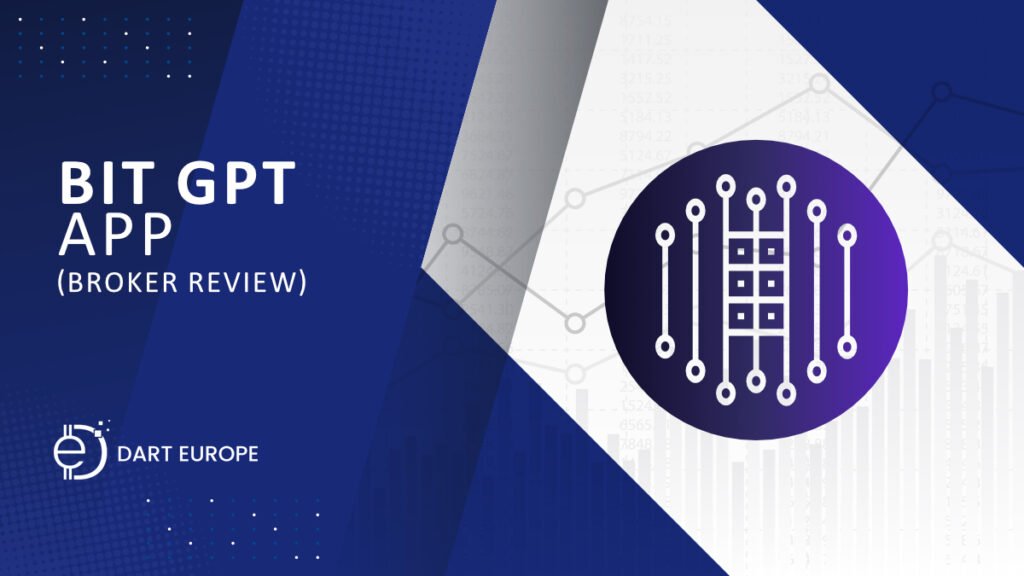Cryptocurrencies really are the gift that keeps on giving. Not only are new tokens springing up all the time, older ones constantly introduce upgrades to make their blockchains more efficient or improve aspects like efficiency, profitability, privacy, and more.
Though Bitcoin might be the cryptocurrency everyone thinks of first when they hear that term, another token has been growing in popularity recently: Monero (XMR). With better privacy and lower hardware demands, Monero is gearing up to outshine Bitcoin.
Monero stands out thanks to the opaqueness of its blockchain and the fungibility of the XMR token. It conceals both the name and the address of each user, making it one of the most private cryptocurrencies out there. Plus, its fungible tokens are completely untraceable.

Read more: Best CPU For Mining Monero [2022]
It’s no wonder then that Monero has amassed a market cap of $2.8 billion and grew by over 200% in 2021. More and more people each day consider tapping into Monero’s huge potential by using Monero Benchmarks — but what does that entail?
In this article, we’ll cover everything you need to know about Monero Benchmarks and Monero mining. We’ll also introduce you to the token, its main advantages, the mining process, and the hardware you need to mine XMR. Let’s get started.
Table of Contents
- What Are Monero Benchmarks?
- Crypto Market Benchmarks
- Monero Benchmarks — Hardware
- Introduction to Monero
- What Protocol Does Monero Use?
- How Does Monero Differ from Bitcoin?
- Is Fungibility Good or Bad?
- A Short Guide to Mining Monero
- Some crypto brokers where you can trade Monero:
- Monero Mining OS Requirements
- Monero Mining Hardware
- Monero Mining Cap
- Is Monero Mining for You?
- How to Start Mining Monero
- Monero Mining Software
- Monero Mining Pools vs. Solo Mining — Which Is Better?
- Conclusion
What Are Monero Benchmarks?
The term ‘benchmark’ can broadly be understood as a performance indicator. In the context of cryptocurrencies, it can have two separate meanings.
Crypto Market Benchmarks
The first and more important interpretation is as a measure of how well a crypto token is doing, or how the crypto market is performing as a whole.
To give you an example, think of the stock market. Companies have individual listings but the most successful ones also get tracked in indices such as the S&P 500 or the Nasdaq 100. These indices use a single value to represent the basket of companies whose performance they track. In other words, they are benchmarks for those companies’ stock value.
In the same way, the crypto market can develop its own indices that track cryptocurrencies. For example, the Crypto 10 index already exists. It is a benchmark of the top 10 crypto coins. But because the crypto market is still a relatively new financial sector, not that many reliable benchmarks have been developed yet.
There can also be individual benchmark indices based around stats like hashrate or transaction speed for each cryptocurrency. But we’ve yet to see whether the market will demand this kind of info.
Monero Benchmarks — Hardware
The second way to think of Monero benchmarks has to do with your mining hardware. These technical benchmarks are essentially scores for CPUs or GPUs after putting them through various stress tests to determine their mining efficiency. Experts test different hardware in the same conditions to find out what the most optimal setup would be for a crypto miner.
If you are trying to build a Monero mining rig, your PC will need a powerful processor (CPU). To save you precious research time, we have assembled a list of the most effective CPUs for Monero mining. Take a look:
| Rank | CPU |
| 1 | AMD Ryzen 9 5950X |
| 2 | AMD Ryzen Threadripper 1950X |
| 3 | Intel Core i9-10900K |
| 4 | AMD Ryzen 9 3950X |
| 5 | Intel Xeon E5-2699A V4 |
| 6 | Intel premium G4560 |
| 7 | AMD Ryzen 3 3100 |
| 8 | AMD Ryzen Threadripper 3960X |
| 9 | AMD EPYC 7742 |
| 10 | AMD Ryzen 5 3600 |
To learn more about why we chose these processors, check our in-depth review of Monero mining CPUs.
Now that you know what the best hardware for Monero mining is, let’s learn more about this cryptocurrency and the exciting opportunities it offers.
Introduction to Monero

The Monero cryptocurrency first appeared in 2014 and uses the XMR currency code. It was designed with privacy in mind, so all transactions on its network are completely anonymous. As a newer cryptocurrency, it has some advantages over older tokens.
Monero’s all-time high is $483.58, reached in May 2021. As of February 2022, XMR is trending around $150.
What Protocol Does Monero Use?
The Monero blockchain relies on the Proof-of-work consensus mechanism to secure it. PoW essentially means that users on the Monero network are rewarded with tokens whenever they complete blockchain verifications.
In other words, each user’s machine constantly verifies the information going through the blockchain, ensuring that there aren’t any blocks with conflicting information. When users complete the verification, they win a Monero token as a reward for their efforts. Thus, mining is the aftermath of keeping the blockchain secure.
Naturally, users who possess more powerful hardware can process more information and have a higher chance of earning XMR. For this reason, there is a great demand for powerful computers with great benchmarks for mining Monero.
How Does Monero Differ from Bitcoin?
Monero’s degree of protection is more extensive than that of Bitcoin. Though transactions on the BTC blockchain are also encrypted, the information is publicly available. With enough time and skills, one could unveil the identity of a Bitcoin user based on their address and transaction history.
Monero takes privacy a step up by keeping both the real name and the address of each participant hidden. It uses ring signatures and stealth addresses to achieve that.
In fact, Monero is classified as a ‘privacy coin.’ This subset of cryptocurrencies refers to tokens that completely obscure the information about each user. Another popular privacy coin is zCash — you can learn more about it in our newest zCash Price Prediction.
In addition, Monero is also fungible, unlike Bitcoin. This means that all Monero tokens are identical, making them more difficult to trace. The crypto coin’s fungibility has produced both positive and negative effects that we’ll look into now.
Is Fungibility Good or Bad?
Because of its characteristics, Monero has gathered a bit of a reputation in the criminal world. Some people use it in illegal activities, especially on the dark web, because its anonymity and non-traceability are superior to other crypto tokens.
But more than that, the fungibility of Monero helps regular users too. With Bitcoin, sometimes you might receive tokens previously used for something illegal. If there is an investigation and the coins are tracked down, they will be flagged and might disappear from your wallet (along with everything else on it), even though you were not the one using them this way.
None of this matters with Monero because no one can trace where your tokens were before they got to you. Thus, you can rest assured that no authority will cancel your account overnight because of things you didn’t do.
Overall, Monero is a very promising cryptocurrency. It has a number of advantages over Bitcoin, which is why it might be worth considering mining XMR instead. In the next section, we’ll go into more detail about mining Monero.
A Short Guide to Mining Monero
As we explained above, the Monero blockchain uses Proof-of-work, which means that you need to complete block verifications to mine Monero tokens.
Some crypto brokers where you can trade Monero:
Bit GPT App Review and Guide (2023): All You Need to Know
Our rating: 4.5/5 Read our in-depth Bit GPT App review, and explore this powerful brokerage…
Bitcoin Motion Review [Updated 2023]: Is This Legit?
The stock market is falling to pieces, and major economies are on their knees. Investors…
Honest Review of Bitcoin Up Official Website & App [2023]
Bitcoin Up Review (2023) – Our Verdict With its intuitive user interface, fast processing times,…
Bitcoin Pro Review 2023: Is the Platform Legit or Scam?
Our Honest Opinion on Bitcoin Pro This Bitcoin Pro review confirms that the platform helps…
Is Bitcoin Loophole Review 2023: A Scam? Our Research Tells All
Bitcoin Loophole is a matching service that connects traders with a large network of experienced…
Monero Mining OS Requirements
The software you need to mine XMR works on virtually all operating systems – macOS, Windows, Linux, and even Android. Whatever your device is, you can probably mine Monero.
Monero Mining Hardware

Other cryptocurrencies often require additional hardware such as an ASIC (application-specific integrated circuits). Having an ASIC might be extremely helpful when mining Bitcoin, but it’s not necessary for Monero.
In fact, Monero’s developers discourage using such hardware because they prefer to see more users mine independently rather than allowing much of the supply to concentrate in the hands of a few big mining farms, as is the case with Bitcoin.
Plus, since the RandomX upgrade was introduced to the Monero blockchain in 2019, it uses CPU mining primarily without relying on the computer’s graphics card (GPU). This change made mining more accessible because previously, the high demand for crypto mining hardware caused GPUs around the globe to spike in price, making them too expensive for many prospective miners.
You can find many RandomX benchmarks out there. For your convenience, we gathered some of the best CPUs for mining XMR here:
- AMD Ryzen 9 5950X
- AMD Ryzen Threadripper 1950X
- Intel Core i9-10900K
- AMD Ryzen 9 3950X
- Intel Xeon E5-2699 V4
Thus, the great news is that you can mine Monero from your computer at home without purchasing any additional hardware. If you’re looking for more detailed hardware suggestions, you can check out our Best CPU for Mining Monero guide.
Monero Mining Cap
Moreover, there isn’t a cap on how many Monero coins can be in circulation, so the mining rate is not slowing down with time, as is the case for Bitcoin. There is a ‘soft’ cap of 18.132 million XMR tokens. Still, even after miners reach that number, the network will continue to issue 0.6 Monero tokens, so verifying transactions will remain a rewarding process. Based on the current supply and mining rate, we estimate that this will happen in the spring of 2022.
On average, it takes about two minutes to mine a single Monero coin.
Is Monero Mining for You?
As with any other cryptocurrency, Monero mining has some implicit costs. You need to consider them carefully to determine if mining is the right fit for you. It is possible to mine Monero without deriving profit from it, something that you’d want to avoid.
First off, consider hardware costs. Yes, you can mine Monero on a regular computer with average processing power. But if you have a better CPU (with a higher hash power), you’d be able to achieve more in a shorter amount of time. Thus, it might be good to invest in a powerful processor that’s more suitable for Monero mining.
Then there’s power consumption. Mining cryptocurrencies is a demanding task, so you can expect your electricity costs to go up. This is another reason why it’s better to maximise your efforts by using a powerful yet energy-efficient machine to mine XMR.
You can use Monero Benchmarks’s dedicated calculator to determine how your machine ranks on these paragraphs. Then you can make an informed decision on whether to start mining XMR or not.
How to Start Mining Monero

If you’d like to start mining Monero, you first need the right mining software. Then, you have to decide how you’d prefer to mine XMR — independently or in a group. We’ll cover these points in this section.
Monero Mining Software
You need to install Monero mining software to become part of the XMR network and the Monero community. For a safe and efficient experience, you can choose something like Monero Benchmarks. We believe that Monero Benchmarks is the most well-rounded mining solution that works for different types of miners. In addition, it offers high data protection and support for novice miners.
Once you install Monero Benchmarks, you’re ready to begin mining XMR.
Monero Mining Pools vs. Solo Mining — Which Is Better?
When you mine XMR independently, you’re referred to as a ‘solo miner.’ You don’t have to split your reward with anybody, but you might mine at a slower speed.
Nevertheless, if your CPU doesn’t have a high enough hash rate, you might struggle with solo XMR mining. For this reason, many beginners find it easier to join a Monero mining pool instead.
The pool is a collective of miners that share the technological burden and split the mining reward amongst themselves. Some of the most well-known pools include SupportXMR, MineXMR, Nanopool, etc.
One disadvantage of mining pools is that you have to pay a membership fee. If you think that’s not for you and have a powerful enough machine, you can skip the pools and mine Monero by yourself.
Whether solo or pool mining is better for you ultimately depends on your mining rig and personal preferences.
If you need more in-depth Monero mining guides, we recommend consulting CoinMarketCap and Cryptopolitan.
Conclusion
Monero is a promising cryptocurrency especially valued for its great degree of privacy. Unlike other tokens, the technical requirements for mining XMR are lower, making it suitable for a higher number of people. Mining Monero can be a safe and potentially profitable activity with the help of software like Monero Benchmarks.
Yet, always do your own research as the cryptocurrency sector remains risky.





